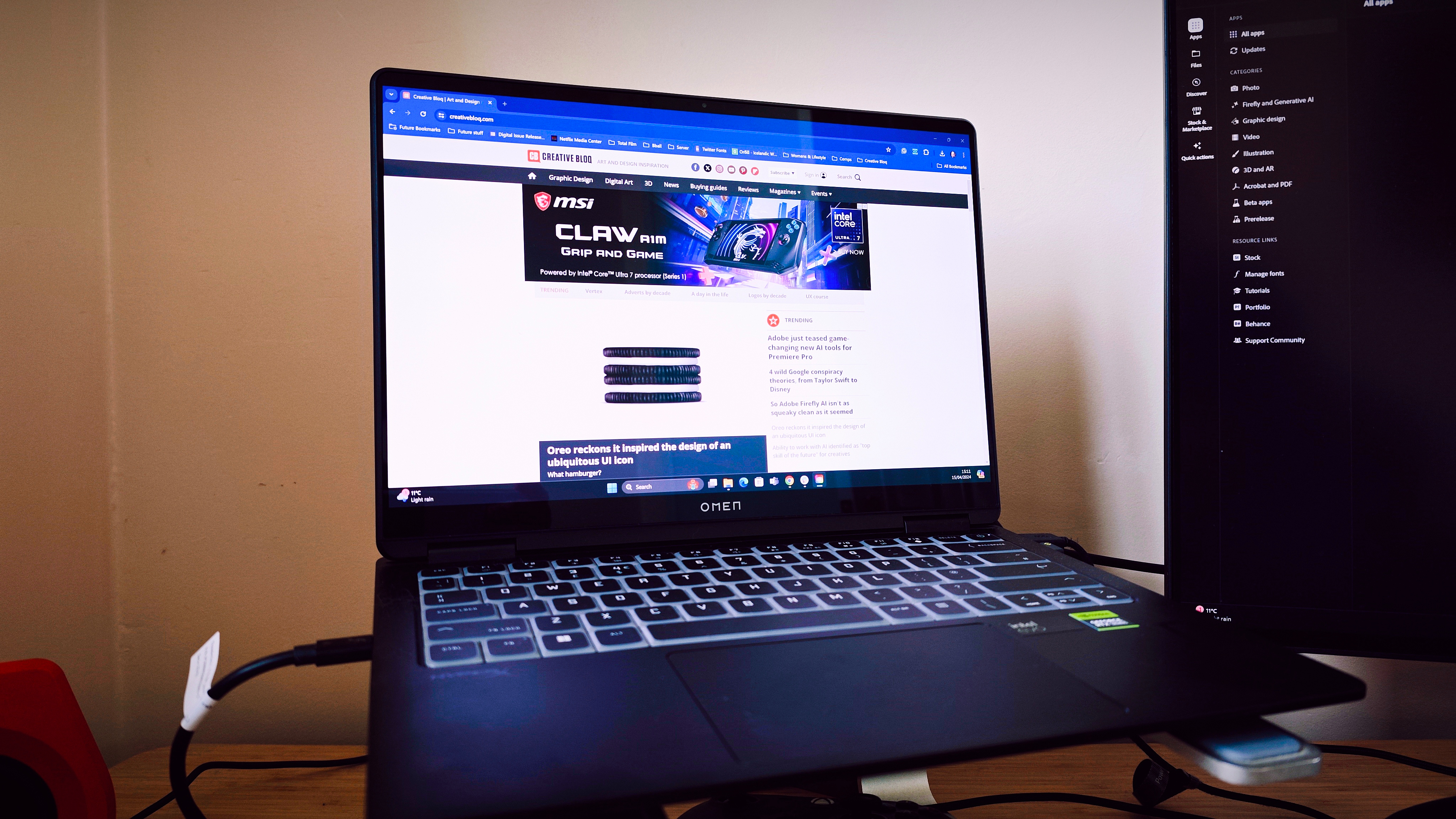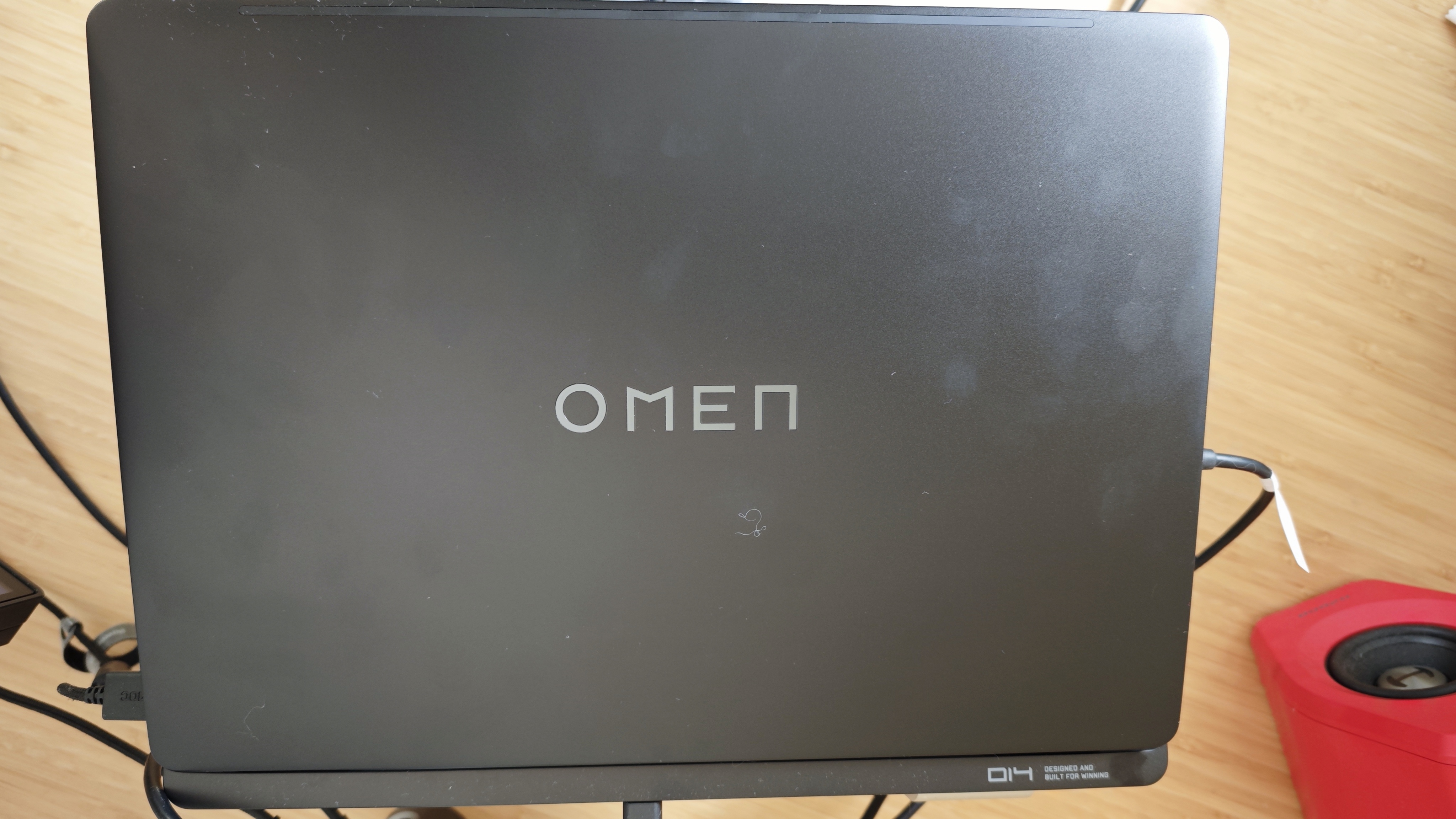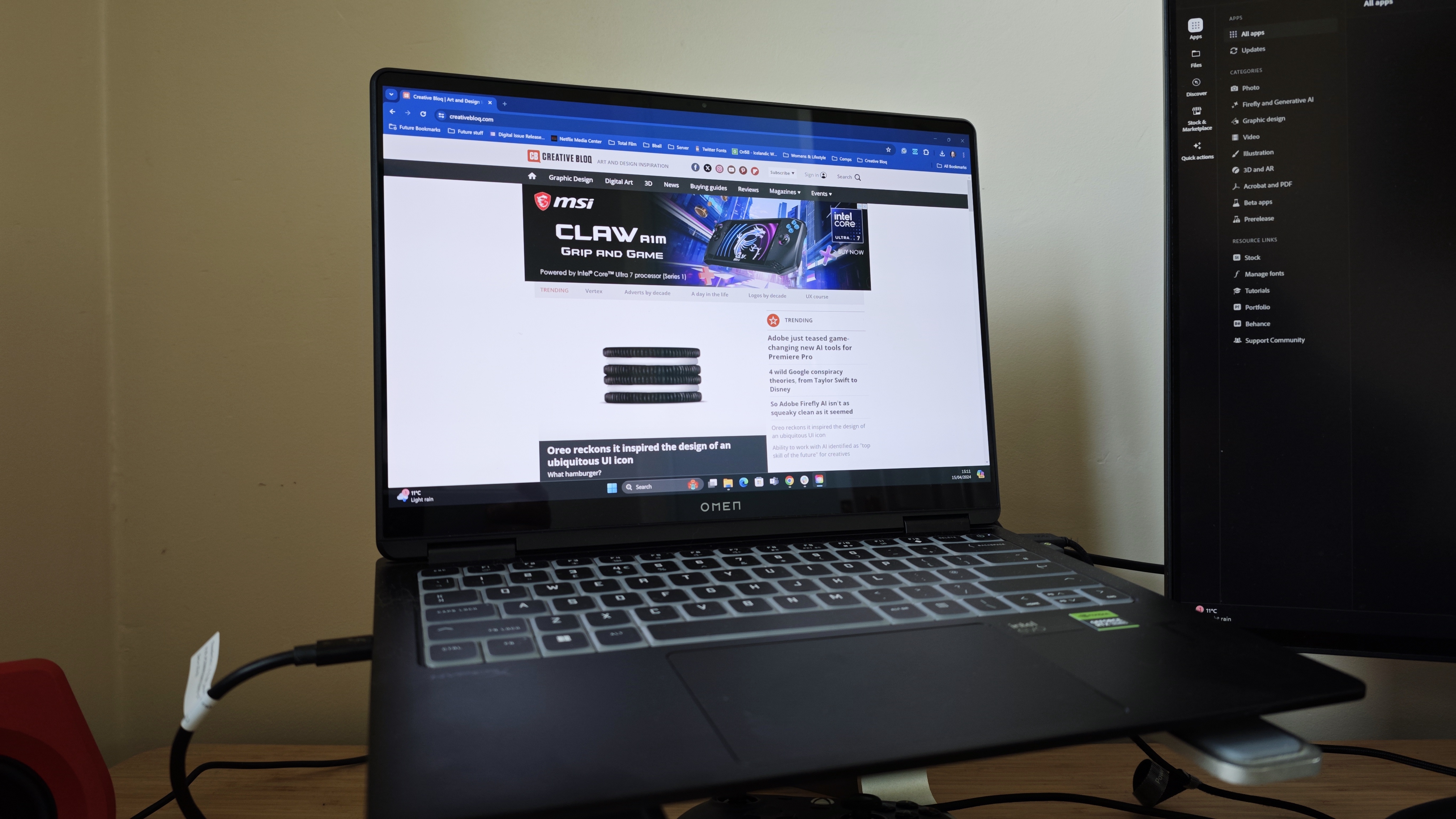
The year 2024 is a big one for laptops, with AI developments moving faster than I can really process. When I received the HP Omen Transcend 14, it was the very latest in AI-boosted laptops, with an Intel Core Ultra i9 processor containing a brand-new NPU designed to increase efficiency and performance of both the CPU and the GPU, which in this case was a discrete NVIDIA GeForce RTX 4070 unit for extra extra oomph.
By the time I finished testing it, it wasn't the very latest any more (with even more powerful NPUs coming out of Computex and other early-summer hardware events.
Which is perhaps a reason to get even more excited about the performance of this Omen Transcend gaming laptop, because it's pretty darn great.
HP Omen Transcend 14 review: Key specifications
Design and display

The HP Omen Transcend 14 is one of many 'grown-up' gaming laptops I've seen coming out this year, in that it bucks two predominant trends of the genre. Firstly, it doesn't look like your typical gaming laptop, instead of a chunky lid, a large lip extruding from behind the screen and a New Years' Eve-level RGB light show, the Omen Transcend is cleverly disguised as a normal laptop. Black sandblasted anodized aluminium on top, and defaulting-to-white backlighting on the keyboard (but you can customise it with every colour of the RGB rainbow, obviously).
It's all rounded corners, lightweight construction and even relative thinness (although it's not exactly in MacBook Air/Zenbook S territory, what with its discrete graphics card inside and all...), meaning I didn't live in constant fear of weird looks in work meetings or visceral anger from neighbouring cafégoers as the fan noise drowns out conversations, neighbouring construction noises and everyone's thoughts (because it's pretty quiet for a gaming laptop too).
The keyboard is fairly compact, but it's still pleasing enough to type on, with a responsive typing experience and decent spacing between keys to minimise errors or mistypes. It helps that they didn't try to squeeze a numpad in there (even though I love numpads). The keys are made from post-consumer recycled plastic too, which makes my inner environmentalist feel a little better about himself.
The second trend is bucks you won't notice until after an hour and a half of using it and finding out to your shocked delight that you still have most of your battery charge left.
Yep, HP promises over 8 hours of battery life out of Omen Transcend 14, which feels unreal for a gaming machine. Yes, that's on the eco mode, but seeing as I'm used to 4-to-5 hours tops from these sort of laptops, even when idling, this feels almost revolutionary.
The screen is a fantabulous 14-inch OLED screen that's capable of a 500-nit output in HDR mode, and even in SDR it's bright and sharp, at almost exactly the quoted 400 nits, with near-perfect P3 colour coverage (and 95% of sRGB too, yum). Would I like it more if it was 16 inches? Yes, probably, but with an OLED panel, I got plenty of detail through in even cluttered gaming scenarios, and in detailed photo editing too.
One big boon here is the 16:10 aspect ratio, which allows for more pleasing content-creation and -editing experience than the more cinematic 16:9 ratio that seems to be on the way out now. With a 2ms response time and flicker-free tech, gaming on an OLED is now my preferred method.
Connectivity is decent despite the thinner-than-usual pack, featuring a Thunderbolt port that pulls double duty as a DisplayPort provider, a 10Gbps USB-C, two USB-A ports and a combo audio jack.
Features and performance

On the inside, you'll find 32GB of RAM supporting the newfangled CPU/NPU combo from Intel, the top-spec 185H model of the Intel Core Ultra chipset. Alongside that we then find an 8GB NVIDIA GeForce RTX 4070 graphics card for a pretty promising combo of new AI tech and tried-and-tested visual performance.
There's a webcam on board, and it produces a very decent FHD picture, for a built-in webcam, at least, and the audio pickup by the onboard mics is very satisfactory too.
The onboard audio software aims to boost the sound coming out, but as so often with laptops, there is a noticeable deficit when it comes to both the bottom and top of the sound range, so anything base-heavy or with nuanced treble sounds will sound flat. Headphones or external speakers are recommended, as is the custom for laptops.
The performance, as evidenced by benchmark testing as well as my own impressions using Photoshop, video-editing software and a variety of video games (from Cities Skylines to fast-paced RPGs and racers), is right up there with the best.
The Geekbench results are ahead of the Intel Core Ultra ASUS Zenbook 14 OLED as well as last year's 13th-gen Acer Predator Helios 16, and thanks to the discrete graphics card, the GPU score outdoes the latter too.
Cinebench scores are very similar to the ASUS Vivobook Pro 16, but lag slightly behind the Predator, while PCMark 10 tests reveal its strength as an all-around performer. With a Total score just a hair below the Predator, the breakdown between Essentials, Productivity and Content creation scores show how strong it is in every aspect, perhaps thanks in part to the AI-boosted efficiency help by the NPU, which can divert extra power wherever it's needed or help things run more energy-efficiently.
It achieved a rare Legendary score in the Fire Strike test on 3DMark, with stellar gaming performance in both benchmarking and my real-life gaming experience.
PugetBench and Blender Benchmark tests also backed up my impression of it as a very capable creative machine, with MacBook Pro M3-level scores (although a fair chunk below the mighty - and mightily expensive - M3 Max chip of that model).
And when it came to the battery life HP promised me, I can happily report that it's pretty darn close to reality. I eked over 7 and a half hours out of it when running a video via an online streaming service on a Balanced power plan and 50% brightness, but it won't run on battery power alone in Turbo guise, so you have to find a power outlet anyway if you plan on maxing out the graphics for a gaming or rendering sesh for the ages.
Price
If you're in the US, the HP Omen Transcend 14, as tested, would set you back $1,979.99, (with the base spec available for $1,599.99 before discounts), while the UK price are £1,799 for the test spec, and £1,449 for base spec if you visit HP's website. There may be better prices available where you are, so keep an eye on our deals widget below.
This is par for the course when it comes to 14th-gen laptops of this power class, and considering the crossover appeal of the Omen Transcend, it's not entirely unreasonable for someone in search of a pro creative laptop with strong gaming performance.
Who is it for?
Gamers, obviously, will love this machine. It makes up for any slight shortcomings of the Intel Core Ultra chip by pairing it with a discrete NVIDIA graphics card, and that also makes it a great machine for demanding video editors or 3D modellers/animators who need lots of rendering power in a machine they can open up in front of a stuffy CEO without blinding them with RGB overkill.
Buy it if:
- You want lots of rendering power
- You like your games fast and smooth
- You don't want the two points above to mean you're always bound to a power outlet
Don't buy it if:
- Your gaming needs are merely moderate
- Your creative work tops out at photo-editing
- You don't fancy spending £/$1,500-plus on a laptop







